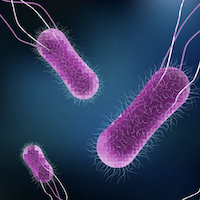Presence of enteric bacterial pathogens in meat samples of wild boar hunted in Campania region, southern Italy

Accepted: 19 November 2021
HTML: 12
All claims expressed in this article are solely those of the authors and do not necessarily represent those of their affiliated organizations, or those of the publisher, the editors and the reviewers. Any product that may be evaluated in this article or claim that may be made by its manufacturer is not guaranteed or endorsed by the publisher.
Wild boars can be infected with several foodborne pathogens which may be transmitted to humans through the consumption of their meat, but currently, data of their prevalence are still limited. The present study aimed to evaluate the presence of enteric pathogens in wild boar meat samples killed in the Campania region. Twentyeight wild boar meat samples were analyzed for the detection of Salmonella spp, Y. enterocolitica, Campylobacter spp., and Shiga- Toxigenic E. coli. Salmonella spp. was detected and isolated in ten samples and after serotyping S. Veneziana, S. Kasenyi, S. Coeln, S. Manhattan, S. Thompson, and S. Stanleyville were identified. Twenty-one meat samples were found to be contaminated with Y. enterocolitica; in 6 samples the ystA and ystB genes were detected simultaneously, while in 15 only the ystB gene, which characterizes the bacteria belonging to the biotype 1A, was present. Shiga-Toxin producing E. coli was detected in 12 while Campylobacter spp was never detected. In conclusion, due to the high occurrence of pathogenic bacteria detected, the present research shows that wild boars are important reservoirs for foodborne zoonoses which may be transmitted to livestock and humans. This confirms the importance of controls throughout the wild boar supply chain. In the Campania region, checks are guaranteed by the Veterinarians who work within the “management and control plan for wild boar in the Campania region” which has the twofold objective of containing the increasingly invasive presence of this animal and guaranteeing greater safety, traceability, and transparency in the consumption of meat.
PAGEPress has chosen to apply the Creative Commons Attribution NonCommercial 4.0 International License (CC BY-NC 4.0) to all manuscripts to be published.


 https://doi.org/10.4081/ijfs.2022.9967
https://doi.org/10.4081/ijfs.2022.9967



